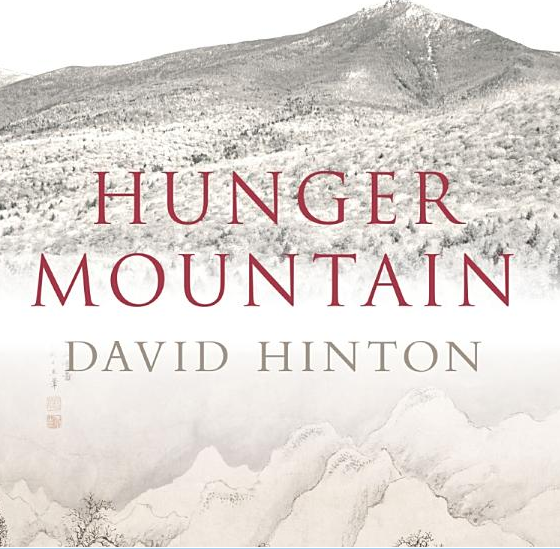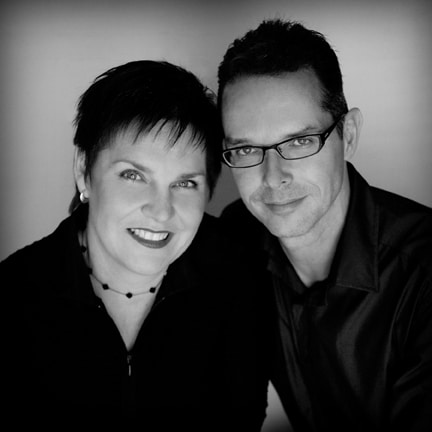
To celebrate The Year of the Dragon and our own End of the Year Dragon Ceremony (which you can all take part in on February 8th or 9th 2013) we have included an excerpt from this beautiful book by David Hinton called Hunger Mountain, published by Shambhala. Enjoy!
The valleys are lost in cloud and mist that thins as it billows across mountain slopes and trails-out over ridgeline hollows. The view from Hunger Mountain’s summit today has all the elements of an ancient landscape painting, but the wind churning through it brings something more into view besides, something rarely glimpsed in those paintings or here in Vermont’s Green Mountain ridgeline stretching away north and south of this Hunger Mountain summit. Dragon’s dynamic life usually remains hidden here, because its movements take place only across geologic time spans. But as I watch summits roam empty expanses of mist, ridgelines breathing in and out of view, dragon seems everywhere rippling and writhing in these mountains.
Feared and revered as the awesome force of change, of life itself, the dragon is China’s mythological embodiment of all creation and all destruction, the ten thousand things tumbling through their traceless transformations. Today, I’m gazing out across dragon in the form of a writhing Appalachian range that was thrust at least 35,000 feet up when the continental plates of Europe and Africa collided with the North American plate 380 million years ago. When the European and African plates eventually broke away from North America 200 million years later, they carried with them parts of the Appalachian range, so dragon’s spiny ripples and twists stretch not only up and down the east coast of North America, but northeastward across Scotland and Scandinavia, as well as southeastward into northwest Africa. Looking out from this summit, I can see only a small part of dragon’s intercontinental sprawl, but if I descend through scraps of mist to the mountain’s uppermost stream-crossing, I find dragon in a much more approachable form.
Just uphill of the trail, it breaks into view as streamwater starts down a thirty-foot wall of red-brown phyllite. It snakes across the upper wall, then writhes back, descending left along a sloping ledge, water brimming off and down sunlit moss beneath, to a broken hollow near the center of the wall. Seething there, it tumbles out and down, brilliant with light, to a larger ledge that transects the wall from the far left, whereupon it spreads out and divides into two forms— one sheeting thin down another glistening moss-covered wall, the other spraying out and cascading the final ten feet down to a rocky pool, seething again and anxious to move on.
As the mythological embodiment of change, China’s dragon gives form to the core idea in ancient China’s conceptual framework, which sees change as the most fundamental characteristic of reality. That framework originates in Taoism’s seminal book, Lao Tzu’s Tao Te Ching (c. 6th century B.C.E.), and Absence and Presence are its two fundamental elements. Presence (Being) is simply the empirical universe, which the ancients described as the ten thousand living and nonliving things in constant transformation; and Absence (Nonbeing) is the generative emptiness from which this ever-changing realm of Presence perpetually emerges. Lao Tzu’s thought might best be described as a spiritual ecology, in which the ten thousand things appear out of Absence, each according to its own nature, independent but intricately interrelated, then die and return into the process of change, only to reappear in another self-generating form. This is the process embodied in the form of dragon.
Arising in the fourth century (C.E.), Ch’an clarified anew the spiritual ecology of early Taoist thought, focusing within that philosophical framework on meditation, Ch’an’s central way of fathoming reality at a level that lies beyond words. Such meditation allows us to watch dragon’s mental incarnation: Presence emerging from Absence in the form of thought burgeoning forth from the emptiness and disappearing back into it. And going deeper into meditative practice, once the restless train of thought falls silent, one simply dwells in that undifferentiated emptiness, that generative realm of Absence.
When the self and its constructions of the world dissolve away into that emptiness of Absence, what remains of us is empty consciousness itself, known in Ch’an terminology as “empty mind” or “no-mind.” As Absence, empty mind attends to the ten thousand things with mirror-like clarity, and so the act of perception becomes a spiritual act: empty mind mirroring the world. As I leave the waterfall and continue down the mountain, each sight goes all the way inside me, mirrored there at the very bottom of what I am, and vanishes there, pure mystery eluding me perfectly. It’s elemental the way things become me for a moment, filling awareness, and then simply vanish, forgotten completely as they open a place for whatever occurs next. And the more clearly I attend to things, the more clearly they vanish into me. The Cosmos is all dragon, all generative transformation, and perception shares this dragon nature, as does any other dimension of this being I am: thoughts and feelings, memories and desires all keep relentlessly appearing and evolving and disappearing into the forgetfulness that is the texture of our day-to-day lives.
Ten minutes downslope from the waterfall, I detour a few hundred meters up a side trail to another favorite stream-crossing, where water forms a number of pools as it works its way down a narrow cleft through large blocks of pale schist. As I gaze into one of those mirrored pools, it seems to be seething with hidden energy. Beneath the pool’s mirrored surface, legend says, dragon is settling in for winter. Small as a silkworm and vast as all heaven and earth, according to those legends, dragon descends into deep waters in autumn, where it hibernates until spring, when its reawakening means the return of life to earth. It rises and ascends into sky, where it billows into thunderclouds and falls as spring’s life-bringing rains. Its claws flash as lightning in those thunderclouds, and its rippling scales glisten in the bark of rain-soaked pines. It can rear up into a mountain, surge in scrawled ridgelines stretching away blue through broken mist and cloud, or cascade in tumbling streamwater. It can clench itself into a beating heart, or twist in a sudden turn of thought. Appearing, then disappearing only to reappear in another form, Presence seething through Absence, Absence through Presence— dragon moves, all sleight-of-hand shimmering in and out of view.
Standing here beside the stream, I can hear all that Absence and Presence. I had Meniere’s Disease a few years ago, which left one ear all but deaf. I listen to my left and there’s streamwater clamoring over rocks, clattering into pools: Presence. I listen to my right, and there’s nothing, no streamwater clamoring and clattering: Absence. And the deafness is odd, somehow amplifying and echoing internal sounds, so I can hear a heartbeat resounding through my body, the pulse of it: Presence, Absence, Presence, Absence.
Dragons were thought to be deaf, and the Chinese graph for “deafness” combines the image for ear with that for dragon. Hence, the language tells me I am “deaf as dragon.” And to be old and worn out, perhaps with the appearance of disappointment and weariness, as I am getting to be, was described as “dragon concentrated”—the same dragon that wanders in the form of continents drifting through their massive slow-motion collisions; dragon thrust up into towering peaks, lazing in the form of mile-deep glaciers that scoured those high peaks away, and idling in these low summits they left behind, all veined with tumbling streams like this one; dragon breathing through the ceaseless modulations of weather that are slowly wearing this mountain away with wind and rain, and today brought the low clouds and ridgeline mist of my walk among the mountainous ripples and folds of dragon’s body. When I listen, I listen with the ears of dragon. When I breath, I breath with the lungs of dragon. And when I look up from the stream and gaze into this mountain trailing out streamers of mist in its geologic flight, dragon gazes into dragon.
From Hunger Mountain, by David Hinton, © 2012 by David Hinton. Reprinted by arrangement with Shambhala Publications Inc., Boston, MA.www.shambhala.com.
David Hinton’s website
Bronwen and Frans Stiene are the co-founders of the International House of Reiki and co-authors of The Reiki Sourcebook, The Japanese Art of Reiki, Your Reiki Treatment, The A-Z of Reiki Pocketbook and the Reiki Techniques Card Deck. Bronwen and Frans teach in the USA, Europe and Australia. Visit the Courses page to find a course near you.


Comments 3
Hi David,
What a wonderful article. It reminds me of the founder of the system of Reiki as he used to practice in the mountains.
Looking forward to reading your book: Hunger Mountain.
Cheers
Frans
Powerful article! And video. I live near a gorge that was carved out by glaciers – it is at once ancient and timeless – the dragon rests there during this cold, cold winter!
Isn’t it great. I love living in the mountains as well.
But no snow here 🙂
Love
Frans